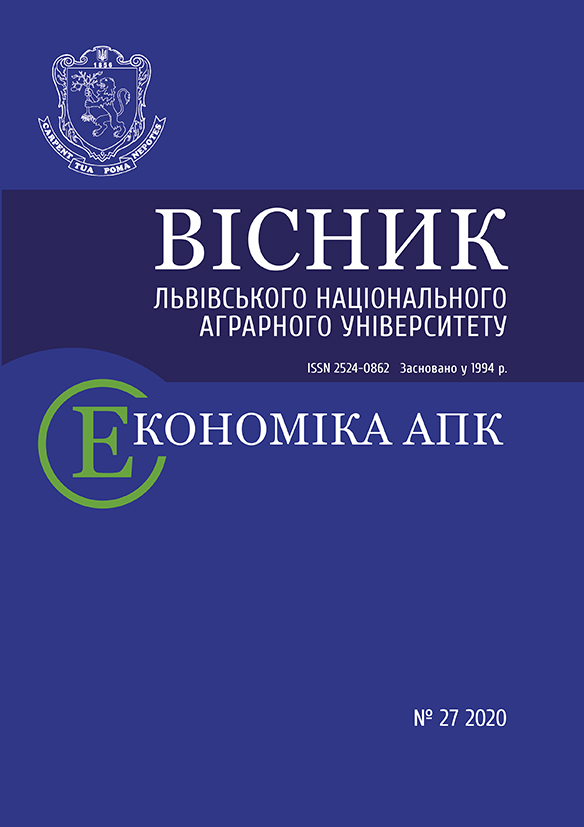Visnyk LNAU: Architecture and Farm Building 2017 №18: 119-122
MODERN RURAL HOMESTEAD IN THE NEW SOCIAL CONDITIONS
A. Baranovich, Master of Architecture
L. Baranovich, Master of Architecture
Lviv National Agrarian University
https://doi.org/10.31734/architecture2017.18.119
Annotation
Incorrect planning and design of the organization of the production process leads to loss of productivity of economic land and environmental pollution. At present, the architectural and planning concept for the establishment of such farms is still underdeveloped. The influence of mixed farms on the architecture of populated areas is not particularly considered.
An independent peasant economy directly includes agricultural territories of its land tenure as a technological basis of production activity and as a natural environment intended for recreation, restoration of resources, satisfaction of recreational and aesthetic demands of a person [4].
One of the factors behind the change in the architectural and planning organization of the village in the new socio-economic conditions is the emergence of mixed-type farms, and, consequently, the creation of a new structural and planning element in the village - housing and production units [1].
It's clear that mixing has both advantages and disadvantages. Mixed agriculture exists in many forms, depending on external and internal factors. External factors are weather conditions, market prices, political stability, technological developments, etc. Internal factors are related to the local characteristics of the soil, the composition of the family and the ingenuity of the farmers.
There is a large variety of mixed systems.
The modern housing estate of the farm mixed farming should be an ensemble in the architectural, planning, space-spatial and artistic decision-making, to meet the requirements and technologies of the present, as it can affect the decision of the landscape of the modern village, its unity with the surrounding buildings and the landscape to improve the stay. people in the system of peasant economy of the mixed structure also taking into account the complexity of this type of management will require the architect of the thoughtful planning organization of the anas Liu architectural expression of the complex.
The competent planning of the territory of the land, the technological process of the production yard of farms will increase profits in the agrarian sector. This farm will form the system of wholesale peasant markets necessary for the preservation of production, non-waste production and its, if necessary, prompt realization.
Key words
farmstead, farm, small business
Link
- Planning and development of the territory of rural settlements and farms: teaching. manual / G.K. Loik, I.G. Tarasyuk, A.V. Stepanyuk, M.V. Smolyarchuk. K.: Ariste, 2009. 344 pp.
- Stepanyuk A. Historical and theoretical bases and preconditions of architectural and planning development of central villages of the primary settlement system of the Western region of Ukraine / Stepanyuk A. // Visnyk of Lviv State Agrarian University: Architecture and Agricultural Construction. 2004. No. 4. 2003. P. 222-227.
- Modern rural dwelling and entrepreneurial activity in new social conditions / Baranovich A., Baranovich L. // Visnyk of Lviv National Agrarian University: Architecture and Agricultural Construction. 2015. No. 16. P. 162-164.
- Ya. Famulyak, I. Chernyak. Functional zoning of the territory of peasant (farmer) farms / Famuliak Y., Chernyak I. // Visnyk of Lviv State Agrarian University: Architecture and Agricultural Construction. Collection of scientific works. LDAU, 1996. P.30-40.
- Cherniak I. Traditions of planning of peasant farms in Ukraine and the principles of their spatial organization / І. Chernyak // Bulletin of the Lviv State Agrarian University: Architecture and Agricultural Construction: Sob. sciences Avе. DLAU, 1996. P. 7-19



